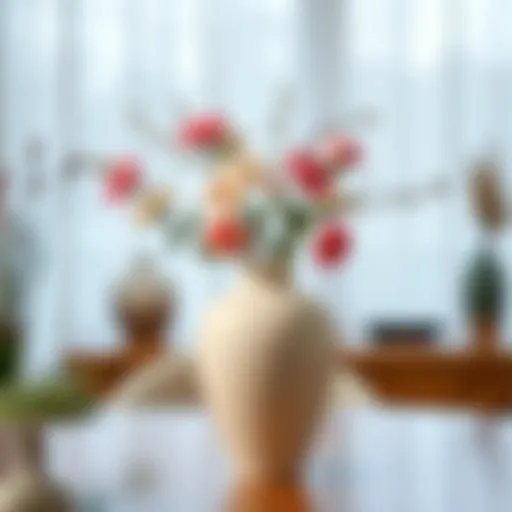Utility of Small Folding Shelves in Modern Interiors
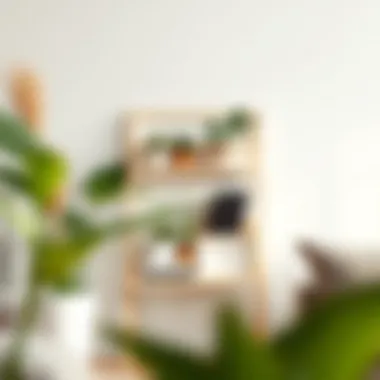
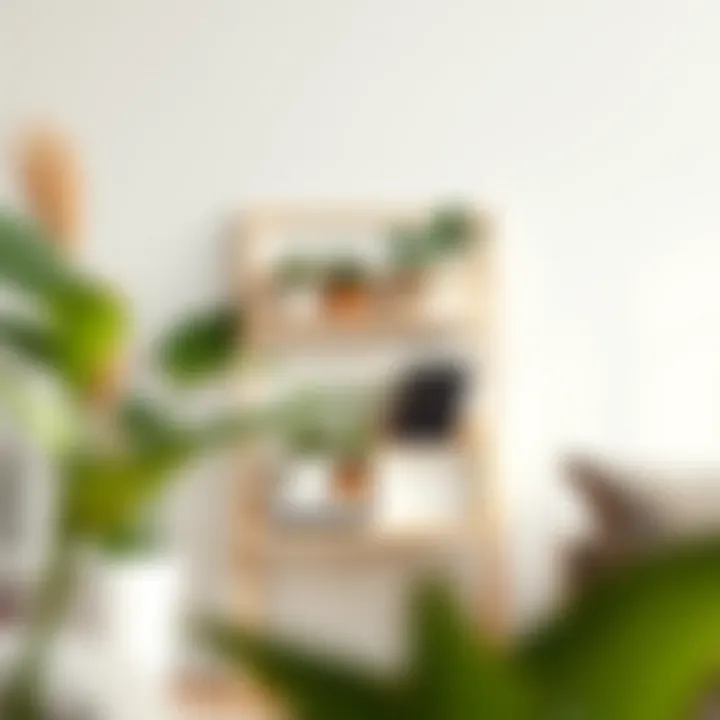
Intro
In today's fast-paced world, every square inch of our homes counts. With urban living becoming the norm, homeowners are increasingly scrutinizing how to use their space effectively while still keeping style in mind. Small folding shelves present an ideal solution, combining practicality with aesthetic charm. They can adapt to various styles, seamlessly blending into any home—from cozy apartments to spacious houses. Understanding their utility goes beyond merely adding another piece of furniture to the room; it involves recognizing how these adaptable structures can enhance functionality and contribute to interior design.
As our society places greater emphasis on contemporary design trends, small folding shelves emerge as more than just a convenient storage option. They play a crucial role in enhancing the visual impact of a space while serving practical purposes. With this article, we will explore their multifaceted roles, practical tips for selection and use, and how they can significantly alter the dynamics of modern interiors.
Furniture Design Trends
Current Styles and Themes
When it comes to furniture design, the trends of today often reflect a blend of comfort and minimalism, with small folding shelves embodying this philosophy beautifully. From Scandinavian simplicity to industrial chic, these shelves can fit right into a plethora of themes.
- Scandinavian: Featuring clean lines and natural materials, these shelves often use light woods and neutral colors, contributing to a serene atmosphere.
- Industrial: Utilizing metals and reclaimed wood, these shelves enhance the raw feel of an urban loft, adding character and ruggedness to the decor.
- Bohemian:Filled with patterns and vibrant colors, bohemian styles allow for a playful arrangement of folding shelves that can display both functional and decorative items.
The beauty of small folding shelves lies in their adaptability. They can be painted or stained to match existing furniture or stand out as a statement piece, providing an eclectic feel to any room.
Color Palettes and Materials
In recent years, there has been a noticeable shift towards using more muted and earthy tones when designing interiors. Combining these shades with the right materials can create a harmonious aesthetic.
- Materials: Natural woods such as oak or walnut are not only durable but also resonate warmth, while metals such as steel and aluminum add a modern twist. Some enthusiasts even prefer acrylic or glass, which lend an airy quality to a space, making it appear larger than it is.
- Color Trends: Current color palettes often mimic nature, using shades of green, brown, and sandy hues. Choosing a folding shelf in a soft cream or sage can enhance this organic feel, while deep navy or charcoal can add depth and sophistication.
"The right combination of materials and colors can take a small folding shelf from functional to fashionable in a heartbeat."
Practical Furniture Tips
How to Choose the Right Size
When it comes to selecting folding shelves, size matters. It’s essential to assess not only the physical dimensions of the units but also the available space where they will be placed.
- Measure the wall space carefully before considering any shelf. Ensure there's ample room not just for the shelf but also for items you plan to display.
- Select shelf height that best suits its intended use. Taller shelves can accommodate larger books, while shorter ones may be more suited for decorative pieces.
Maintenance and Care for Longevity
To ensure your small folding shelves maintain their beauty and functionality over time, regular maintenance is key. Here are a few tips:
- Dust Regularly: Use a soft cloth to wipe away dust and dirt from both the shelves and the wall sections they are attached to.
- Check Fixtures: Occasionally, inspect the hinges or brackets to confirm they’re secure. A bit of tightening can prevent future issues.
- Avoid Excessive Weight: Make sure that you’re not overloading your folding shelves. Choose items that fit well within the weight limit specified by the manufacturer.
In essence, small folding shelves add not just storage but an essential element of design to any room. As homeowners and decorators alike consider innovative ways to optimize space, integrating these shelves into modern interiors is worth exploring.
Prelims to Small Folding Shelves
In the dynamic world of interior design, small folding shelves have emerged as a noteworthy feature. These shelves offer more than just a place to keep books or display decor; they embrace the principles of both functionality and aesthetics all wrapped up in a compact design.
When we talk about modern homes, the need for optimized space becomes paramount, especially in urban areas where square footage comes at a premium. Therefore, small folding shelves serve as ingenious solutions, addressing the requirements of compact living while enhancing the overall decor.
Their ability to be folded away when not in use means they can easily adapt to changing needs, making them a favorite among home dwellers, especially those styled towards minimalism. In other words, it’s like having an extra helping hand that can magically appear or disappear as needed.
Key Elements
- Space Efficiency: Small folding shelves can transform unused nooks into functional areas, allowing homeowners to maximize otherwise wasted space.
- Versatility: Their adaptable nature makes folding shelves suitable for various rooms, whether in a cozy kitchen or a bustling home office.
- Aesthetic Flexibility: Available in an array of designs and materials, these shelves can complement diverse interior styles, from rustic charm to sleek modernity.
Considerations about Folding Shelves
Before jumping into a purchase or DIY project related to folding shelves, it’s crucial to consider factors such as:
- Weight Capacity: Can the shelf hold what you plan to store? Understanding this will help avoid mishaps down the road.
- Material Suitability: Choosing the right material is vital. Are you looking for wood warmth, metal sturdiness, or innovative composites? Each has its pros and cons.
In essence, small folding shelves embody the emerging trend of multifunctionality in home furniture. They respond to our evolving lifestyle demands while providing solutions that align with modern sensibilities. For homeowners, interior decorators, and DIY enthusiasts, these shelves are a canvas waiting for personal touch, capable of enhancing both day-to-day living and curated decor.
"Maximizing function without compromising style—this is the heart of contemporary design, and small folding shelves embody this philosophy perfectly."
Thus, as we explore further, we can unearth the substantial advantages that these space-saving wonders can bring into any interior.
Defining Small Folding Shelves
In the realm of interior design, the incorporation of small folding shelves stands out as a practical solution for homes seeking to balance functionality with style. These shelves serve as a clever means to optimize limited spaces, offering dual purposes beyond mere storage. As the trend of minimalism and multifunctionality gains traction, understanding the essentials of what constitutes small folding shelves becomes vital for homeowners and designers alike.
Small folding shelves are designed with the unique characteristic of being collapsible, allowing for easy installation and removal as per the needs of the user. The beauty lies in their versatility; they can function as a basic shelf when needed for display or storage, and be folded away to free up valuable floor space when not in use. This inherent adaptability renders them particularly appealing in urban settings, where every square foot matters.
Characteristics of Folding Shelves

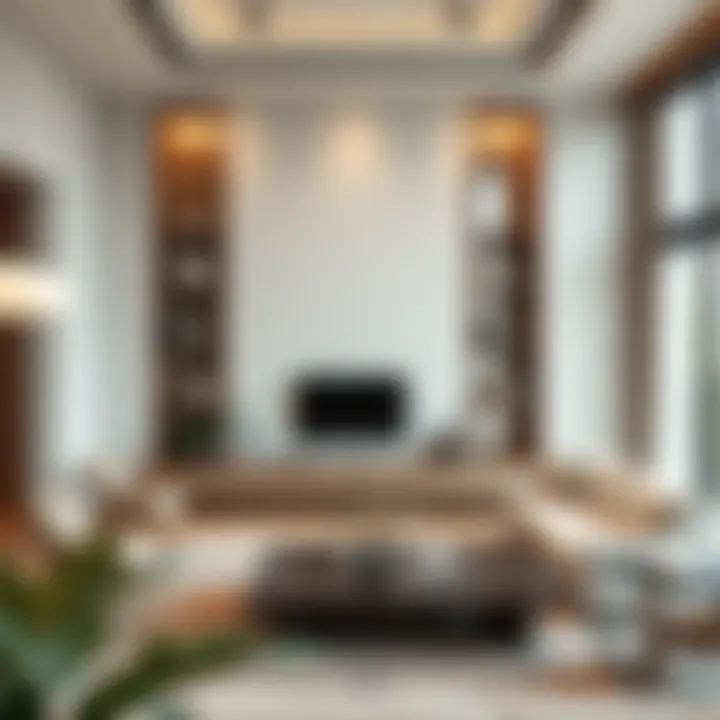
The design elements of folding shelves often influence their utility and aesthetic appeal. To appreciate their value fully, consider the following characteristics:
- Compact Size: Small folding shelves typically require less wall space than traditional shelving units. Their compact nature makes them ideal for tight corners or small apartments, allowing individuals to utilize every inch effectively.
- Easy Operation: Opening and closing these shelves can often be completed with one hand, thanks to user-friendly mechanisms like hinges or brackets. Whether you're a single occupant or a small family, convenience becomes a key player.
- Material Diversity: These shelves come in a variety of materials, from lightweight woods to sturdy metals, and even innovative composites. Each material choice not only affects the shelf’s aesthetic but also its weight limit and stability.
- Customization Options: Homeowners can find or even create folding shelves that match their decor, adding a unique touch to their interiors. This customization isn't just skin-deep; it reflects a deeper consideration of how shelves can inform the overall feel of a space.
The combination of these characteristics makes small folding shelves not merely practical items, but also thoughtful additions that enhance a home’s narrative.
Comparison with Traditional Shelves
When lined up alongside traditional shelves, small folding shelves reveal distinct advantages. Understanding these differences can guide consumers in making informed choices that align with their lifestyle needs.
- Space Efficiency: Traditional shelves, while often broader and sturdier, demand a permanent footprint. Once installed, they can't be easily moved. In contrast, folding shelves can be tucked away, making them perfect for transitional spaces, such as guest rooms or multi-use areas.
- Cost-Effectiveness: Folding shelves can be a more affordable option for individuals unwilling to make a substantial investment in permanent shelving systems. This accessibility means homeowners can refresh their interior designs without burning a hole in the pocket.
- Installation Flexibility: Unlike traditional shelves that may require a full toolkit for installation, many folding shelves come with easy-to-follow instructions, ideal for the DIY enthusiast or those just starting to dip their toes into home improvement.
In summary, small folding shelves not only redefine storage but also bridge the gap between style and functionality. They introduce an element of fluidity in home design, allowing residents to mold their spaces in ways that were previously thought impossible.
Functional Benefits of Small Folding Shelves
The realm of interior design is often tied to the efficient use of space, where every square foot counts. In this light, small folding shelves emerge as a practical solution tailored for modern interiors. Whether you live in a cozy apartment or a sprawling house, these shelves offer excellent functionality that adapts to our fluid lifestyles. Understanding their advantages fosters a deeper appreciation for this often-overlooked piece of furniture, making it essential for homeowners, designers, and DIYers alike.
Space-Saving Solutions
In urban settings or smaller homes, maximizing space is not just a luxury; it's a necessity. Small folding shelves fit the bill perfectly, providing versatile storage options without taking up permanent real estate. Their ability to collapse away when not in use is a game-changer. Instead of leaving shelves loaded with clutter, homeowners can utilize available space for other activities, be it yoga, playtime with kids, or simply creating an open feel in a cramped room. This versatility is paramount in achieving a balanced and functional home.
Adaptability for Various Spaces
Living Rooms
In the context of living rooms, small folding shelves serve as a testament to versatility. They can function as temporary display units during gatherings or double as storage for knick-knacks and books. A key characteristic that makes them popular in this setting is their ability to blend in seamlessly with diverse decor styles, from modern minimalism to rustic charm. Their unique feature of being customizable to height and width allows homeowners to create a feel that resonates with their personal taste, allowing for an adaptable environment, especially when hosting guests.
Home Offices
Home offices have experienced a renaissance with the rise of remote work, which accentuates the need for efficient use of space. Small folding shelves in this environment provide organized storage solutions that keep essential items within reach while maintaining an uncluttered workspace. The adaptability of these shelves proves advantageous, especially in compact home setups. By offering a spot for books, supplies, and even plants, they not only enhance functionality but also contribute to creating a motivating workspace. It's an economical choice that does not compromise on style or utility.
Kitchens
When it comes to kitchens, the strategic placement of small folding shelves can transform an ordinary cooking space into an organized haven. They are perfect for storing spices, utensils, or condiments, keeping them easily accessible. A defining characteristic of kitchen folding shelves is their space-efficient design, which takes advantage of vertical space, often overlooked in smaller kitchens. However, one should consider the need for sturdiness due to potential weight from kitchen items. When well-chosen, these shelves combine aesthetic appeal with practical storage, keeping the culinary heart of the home both functional and stylish.
Small folding shelves are more than just furniture; they are the embodiment of smart living, optimizing space while enhancing aesthetic value.
Aesthetic Appeal of Folding Shelves
When it comes to interior design, aesthetics matter just as much as functionality. Small folding shelves bring a unique blend of style and convenience that can transform any space. Their ability to contribute not only to the visual aesthetic but also to the overall charm of a room makes them significant in modern interiors. Homeowners and designers alike recognize the potential these shelves have to elevate the atmosphere of a space.
Folding shelves can be integrated into a variety of design styles, whether your preference leans toward rustic farmhouse or sleek modern minimalism. This versatility allows individuals to personalize their spaces without overwhelming them with bulky or permanent fixtures. The appeal lies not only in their adaptability but also in how they can enhance the visual narrative of a room.
Design Trends in Folding Shelves
As we navigate through various design trends, folding shelves continue to keep pace with evolving tastes. More than just practical storage solutions, they embody a modern approach to space management.
- Multifunctionality: A growing trend is to use shelving that serves multiple purposes, such as incorporating a desk or workspace into the design. This allows homeowners to get more bang for their buck by having a designated place for work and storage integrated into one unit.
- Open Concepts: With more homes embracing open floor plans, folding shelves function beautifully as room dividers or to create visual sections within a large space without obstructing sightlines.
- Sustainability: There’s a noticeable trend leaning towards eco-friendly materials and designs. Consumers are opting for folding shelves made from reclaimed wood or sustainable materials, making eco-conscious choices without sacrificing style.
Exploring online platforms like Pinterest or Instagram can provide a treasure trove of inspiration for current trends in folding shelves, showcasing innovative designs that push traditional boundaries.
Color and Finish Options
Just as important as the structure of the folding shelf is its color and finish. These elements often determine how well a shelf harmonizes with the surrounding decor. The right color can create a cohesive look, while a contrasting hue might add an unexpected pop to the space.
- Neutral Tones: Shades like white, gray, and beige remain timeless. They provide a clean slate to showcase decor while ensuring the shelves don’t divert attention from statement pieces in the room.
- Bold Colors: For a more dynamic presence, many are turning toward vibrant hues such as deep blues or rich greens. These colors inject personality and can even serve as a conversation starter in the room.
- Natural Finishes: Wood finishes—ranging from light pine to dark walnut—carry warmth and texture. They can bridge rustic elements with contemporary design, creating an inviting atmosphere.
Choosing the right finish could be the difference between a shelf that feels right at home and one that feels out of place. It is worth considering how different finishes reflect light and relate to the rest of your decor.
Ultimately, small folding shelves are not merely functional items but vital components of stylish decor. Their aesthetic appeal fosters creativity while allowing individuals to express their unique styles in their living spaces.
Materials Used in Folding Shelf Construction
The choice of materials in the construction of folding shelves isn't just a matter of preference; it can deeply influence functionality, longevity, and overall design coherence in modern interiors. Homeowners, interior decorators, and designers often find themselves contemplating the suitability and durability of various materials when selecting shelves that will serve in both aesthetic and practical capacities. Each type of material comes with its own set of attributes, making it essential to understand their respective pros and cons.
Wood Materials: Pros and Cons
Wood is a go-to choice for many when it comes to furniture and shelving. Its warmth and natural beauty can enhance any space. However, using wood in folding shelves has both advantages and disadvantages.
Pros:
- Aesthetic Appeal: Wood brings a timeless elegance that can complement traditional or contemporary styles alike. Its grain and texture add charm and personality.
- Sturdiness: Hardwoods like oak or walnut provide excellent weight-bearing capacity, making them reliable for storing books or decor.
- Easy to Customize: Wood can be cut, stained, or painted to suit any design scheme, allowing for personalized touches.
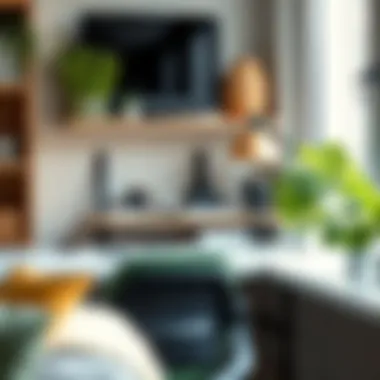
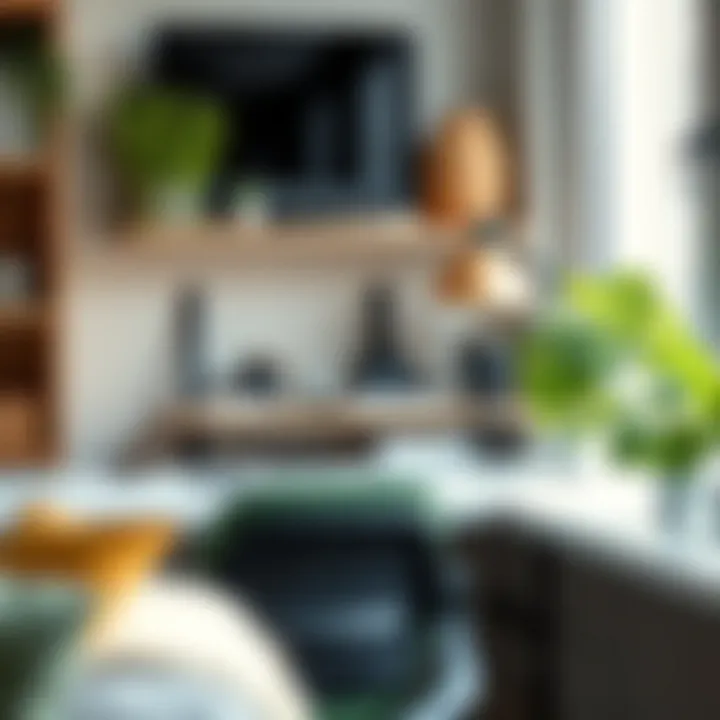
Cons:
- Weight: Solid wood can be heavy, making it potentially cumbersome for folding shelves designed for ease of storage.
- Susceptibility to Moisture: Unless properly treated, wood can warp or rot in humid environments, which is a concern for kitchens or bathrooms.
In summary, while wood can create an inviting look, one must weigh its weight and maintenance needs against its visual appeal.
Metal Frames and Their Durability
Metal frames are becoming increasingly popular in folding shelf design, thanks to their durability and modern aesthetic. They offer a very different set of qualities compared to wood.
Benefits:
- Durability: Metal is typically more resistant to damage and wear, making it ideal for long-lasting usage under varying conditions.
- Stability: Metal frames do not warp or sag over time, which can be a concern with wooden shelves as they age or are exposed to humidity.
- Sleek Design: They often come in a variety of finishes that can add an industrial or contemporary flair to your space.
Drawbacks:
- Heat Conductivity: Metal can become hot in sunlight, which could be detrimental to certain items like electronics or porcelain.
- Weight Limitations: While they can support more weight than some woods, too much stress on flimsy models can cause bending or other structural issues.
Understanding the balance between aesthetic value and practical performance is crucial when considering metal frames for folding shelves.
Innovations in Composite Materials
The rise of composite materials in the furniture industry offers exciting new possibilities for folding shelves. Composites integrate multiple materials to enhance strength and reduce weight, making them a viable option in today's market.
Advantages:
- Lightweight: Composites are generally lighter than solid wood, which simplifies the folding and unfolding process.
- Cost-effective: Often cheaper than solid wood and metal options, these materials provide a budget-friendly solution.
- Variety of Finishes: Many composite shelves are designed to mimic the appearance of wood or metal, allowing for a customized look without the associated high cost.
Concerns:
- Longevity: Composites may not offer the same lifespan as solid wood or metal. Some composites could degrade over time, especially if exposed to moisture or extreme temperatures.
- Environmental Impact: Depending on the manufacturing processes, some composites may use materials that are not as eco-friendly as natural wood.
Overall, while composite materials present innovative choices, it’s essential to consider the trade-offs in terms of durability and ecological implications.
Selecting materials for folding shelves plays a pivotal role in defining their utility and aesthetic role in modern interiors. It is wise to ponder how these elements align with your specific needs and style preferences.
Selecting the Right Folding Shelf
Choosing the appropriate folding shelf can significantly influence how well it serves its purpose in a living space. With various shades of designs and materials available, finding the right fit calls for careful thought about functionality and aesthetics. When selecting a shelf, it's essential to consider the specifics of your environment, your storage needs, and how the shelf can harmonize with your existing decor. By taking these factors into account, you can ensure that your choice will optimize both utility and visual appeal in your home.
Assessing Your Space Needs
Before diving into the sea of choices, you must begin with an honest assessment of your space. Did you ever bump into furniture that doesn’t quite fit? It happens all too often. Here are some points to evaluate your space:
- Measurements: Measure the walls where you plan to install the shelf. Consider both height and width. It would be a shame to buy a beautiful shelf only to realize that it won't fit in that corner you envisioned!
- Functionality: Think about how you'll use the shelf. Will it hold books, plants, kitchen utensils, or something else altogether? Knowing its purpose can help determine its dimensions and placement.
- Layout: Visualize how the shelf complements existing furniture. An oversized shelf may dominate a small room, while a pint-sized one might disappear against a vast wall.
- Accessibility: Ensure that the shelf is easy to reach. If you plan to store things you’ll use frequently, keep it within arm's reach.
By meticulously assessing these components, homeowners can pinpoint the ideal placement and size for their folding shelves, ensuring they will not only fit but also enhance their environment.
Choosing Appropriate Load Capacity
Not all folding shelves are created equal, particularly regarding load capacity. Selecting one that can support what you intend to store is vital. Here's how to secure that:
- Intended Items: Start by listing everything you plan to place on the shelf. This means more than just guessing how many books you’ll fit. Think about the weight of kitchen appliances or any other items that might end up on that shelf.
- Manufacturer's Specifications: Always consult the load-bearing guidelines from the manufacturer. This info might seem dense at times, but it’s crucial. For instance, a stylish bamboo shelf might look great but won't stand strong under heavy cookware.
- Safety Considerations: Imagine a shelf sagging underweight, or worse, collapsing. You don't want that, do you? Always opt for a shelf that exceeds your expectations for load capacity to avoid this sticky situation.
- Support Techniques: Investigate whether the shelf includes wall mounts or brackets that add stability. Some designs might appear sleek but can compromise on strength without proper support.
Remember, it’s better to err on the side of caution. Opt for a shelf that can handle more than you think you will need. In doing so, you’ll avoid future headaches related to unexpected overloading.
DIY Folding Shelf Projects
When it comes to optimizing space in contemporary living areas, DIY folding shelf projects can make a world of difference. While many homeowners might gravitate toward store-bought solutions, crafting your own folding shelves presents numerous benefits. Not only do these projects enhance creativity and personal expression in design, but they also allow for customization tailored to specific needs and aesthetics. Moreover, a DIY project can be a fulfilling activity that adds a sense of accomplishment, transforming not just furniture but also the environment where one lives.
Exploring DIY options further emphasizes the adaptability of folding shelves. They can be uniquely designed to fit awkward spaces or complement existing decor styles, thus providing greater utility than standard shelves often can. Plus, the materials can be chosen based on personal preferences regarding durability and finish, elevating both form and function in your home.
Basic Tools and Materials Required
Before diving into the crafting of a folding shelf, you'll need to gather some essential tools and materials. Having the right equipment on hand can streamline the building process and ensure a finished product that is both sturdy and attractive. Here’s what you typically might need:
- Materials:
- Tools:
- Wood (like plywood for the shelf and 2x4s for the frame)
- Hinges (strong enough to withstand the shelf weight)
- Screws and nails
- Sandpaper (for finishing edges and surface)
- Paint or wood stain (optional, for aesthetic purposes)
- Power drill
- Saw (circular or hand saw)
- Measuring tape (to ensure proper dimensions)
- Level (to check evenness)
- Screwdriver
- Safety goggles (always important for protection)
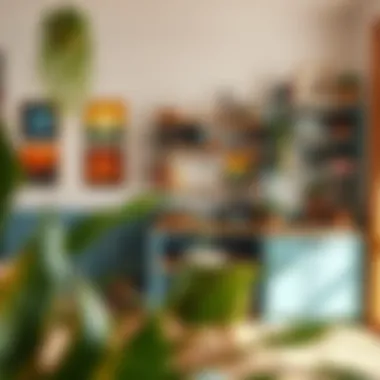
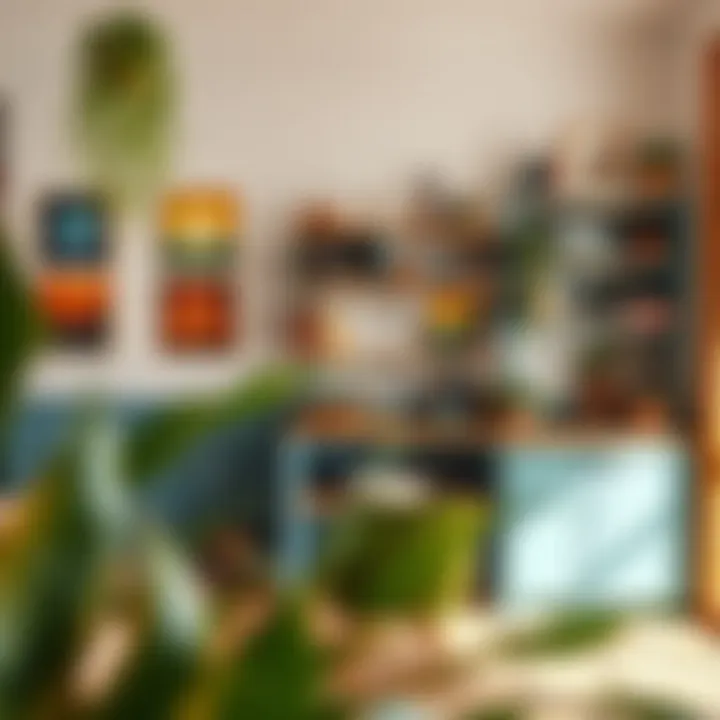
Having these basics in hand sets a solid foundation for your shelf-building endeavor. Forgetting even a small item could lead to delays or complications, which no one wants.
Step-by-Step Guide to Building a Folding Shelf
Building a folding shelf can be an enjoyable project. Here’s a simple step-by-step guide to help you through the process:
- Measure Your Space:
Determine where you want the shelf to go and its dimensions. Measure precisely to ensure a snug fit. - Cut the Wood:
Cut the pieces of wood to the sizes you need for both the shelf and supports. Always double-check your measurements before cutting. - Create the Frame:
Assemble the frame first. Connect the vertical supports to the horizontal beam using screws. Use the level to ensure everything is straight. - Attach Hinges:
Secure the hinges to the underside of the shelf, positioning them at the back edge. This allows the shelf to fold up against the wall. - Finish the Wood:
Smooth out any rough edges using sandpaper. If desired, apply paint or wood stain to the surface for a polished look. - Install the Shelf:
Mount the frame to the wall securely, ensuring it is level. Lift the shelf to the desired position and attach it to the frame using hooks or pins for added stability. - Test Weight Capacity:
Before placing items on the shelf, test its stability by gently applying weight to ensure everything is secure.
By the end of this project, you should have a stylish and functional folding shelf that reflects your taste and meets your space needs. Remember, building your own furniture not only brings a sense of ownership but also turns simple items into personal statements in your home.
Creating your own folding shelf can not only save you money but also provide a unique solution tailored to your specific needs. You'd be surprised how much joy a well-built shelf can bring to your space, both in utility and aesthetic value!
For more tips and inspiration, you might find helpful information on reddit.com, or check out articles on woodworking at wikihow.com.
By engaging in this DIY project, you are not just a homeowner; you become a designer of your own space.
Maximizing Utility with Folding Shelves
In contemporary interiors, the versatility of small folding shelves emerges as a game changer that does not merely serve a functional purpose but also contributes to the overall aesthetics of a space. These clever designs can transcend their basic use, becoming integral to maximizing utility in ways that many might not readily consider.
Combining with Other Furniture
Folding shelves can easily complement other furniture pieces, creating a seamless flow throughout a room. For instance, when teamed with a pull-out sofa, they can transform a cramped living area into a multifunctional space, offering both seating and storage without overwhelming the visual landscape. The key is to select designs that share a tonal palette or finish, allowing the shelves to harmonize with existing furnishings.
Consider this: a mid-century modern folding shelf next to an upscale, minimalist coffee table could strike a balanced look without clashing. Their ability to fold away when not in use means they can coexist with larger items without monopolizing the room.
You can also pair these shelves with desks in a home office setup. A folding shelf above the desk can hold essential items but can be tucked away easily when work is done. It creates an uncluttered appearance, inviting focus back to the workspace.
The beauty of combining folding shelves with other furniture lies in the endless creative combinations that can enhance function while preserving style.
Creative Uses Beyond Storage
Small folding shelves provide much more than mere storage solutions; they offer innovative design possibilities that can redefine spaces.
- Display Hubs: Use a folding shelf to showcase a rotating collection of art or books. This tactic keeps the environment lively and can change seasonally or according to personal whims.
- Gardening Station: In a sun-drenched kitchen or balcony, a small folding shelf can act as an herb station. It transforms into a delightful green corner, perfect for culinary experiments, without taking up permanent floor space.
- Home Bar: With the right backdrop and accessories, a folding shelf can double as an impromptu bar cart, liberating social gatherings from the confines of the kitchen. When the party’s done, simply fold it away.
In essence, the adaptability of folding shelves encourages manifold uses beyond what most might initially conceive. They inspire a shift toward a more fluid living environment, one where furniture is as dynamic as the lives we lead.
Being innovative with folding shelves not only elevates their utility but also demonstrates a commitment to creativity in home design.
Challenges and Considerations
In the world of interior design, every choice carries a weight of responsibility. When it comes to incorporating small folding shelves into your space, it’s vital to consider various challenges that may arise. While these shelves offer fantastic benefits like adaptability and efficiency, overlooking certain aspects can lead to complications down the line. This section sheds light on crucial considerations—stability and safety being paramount. Addressing these areas ensures that the folding shelves not only enhance your décor but also serve their purpose safely and effectively.
Stability and Safety Issues
Before installing your small folding shelf, it’s prudent to address stability and safety concerns head-on. Many homeowners might underestimate how essential a sturdy installation is for maintaining the integrity of the shelves over time. When you fold and unfold these shelves, they should not wobble or sway, which could lead to accidents or damage.
- Weight Distribution: Pay close attention to how weight is distributed on the shelves. If you’re stacking books or other heavy items, ensure that the shelf can handle the load without bending or collapsing. Ideally, shelves should be installed in a manner that the heaviest items are closest to the wall, providing better balance.
- Mounting Hardware: Use quality mounting hardware specific to the wall type. For example, drywall anchors might not suffice if you are mounting on concrete or brick. Choosing hardware that can bear the weight and provides a solid anchor into the wall is vital to avoid potential disasters.
- Test Stability: After installation, test the shelf by pressing on it lightly with your weight. This offers a good indication of whether it’s securely attached. The last thing you want is to put your favorite items on the shelf only to have them toppling down unexpectedly.
It might feel like overkill, but a little added caution can save you from headaches later. Remember, a well-installed shelf can enhance both functionality and aesthetic appeal.
"Safety comes first. A beautiful home is one that feels secure."
Maintenance and Care of Folding Shelves
Just like any other furniture, small folding shelves require a modicum of care to ensure long-lasting use. While they are versatile and convenient, neglecting their upkeep can lead to premature wear and tear.
- Regular Cleaning: Dust and grime are the enemies of both form and function. Regularly wipe down surfaces with a soft cloth—this helps maintain their beauty while preventing a build-up of dirt that can wear on materials.
- Check Mechanical Components: If your folding shelves involve mechanical parts, such as hinges, inspect these regions periodically. Lubricate hinges as needed to maintain smooth operation; this simple action can prolong lifespan significantly.
- Address Minor Repairs Promptly: It’s wise to nip any issues in the bud. Should you notice a loose shelf or a crack in the wood, take the time to fix these promptly. Ignoring minor repairs can spiral into more significant problems down the line, potentially jeopardizing safety.
- Seasonal Checks: Depending on your climate, seasonal changes can also affect your shelving. Extreme heat or humidity can warp wood or affect the integrity of metal components. Regular checks during changing seasons can help mitigate these effects.
By staying on top of maintenance, not only do you extend the life of your small folding shelves, but you also ensure that they remain a safe and efficient feature in your home. Remember, a little bit of proactive care goes a long way in maintaining both utility and aesthetics.
Ending: The Lasting Impact of Small Folding Shelves
As we look back on the roles that small folding shelves play in modern interiors, it’s clear that their relevance stretches far beyond mere aesthetics or convenience. These shelves encapsulate versatile solutions that appeal to a wide range of needs in today’s homes. In an era where space is often a constraint, and individuality in decor is prized, small folding shelves step into the spotlight.
Long-Term Benefits in Home Design
The long-term benefits of integrating small folding shelves into home design cannot be understated. First off, they offer dynamic usability that can adapt to changing needs. Whether it’s accommodating new decor items or shifting to facilitate varied tasks like homework or crafting, these shelves provide a backdrop for activities and a canvas for creativity.
Moreover, folding shelves add an element of flexibility. When hosting gatherings, for example, they can be easily stowed away to free up valuable space for guests. This aspect becomes critical in smaller homes or apartments where every square inch counts. They create multifunctional areas without requiring permanent fixtures, thus keeping the living space adaptable over time.
Let’s not forget about their stylish contributions. Many designs now available come with chic finishes that enhance the overall aesthetic of a room, allowing them to blend seamlessly with various decor styles. For homeowners keen on making a statement, opting for unique materials or colors can add flair that sets their space apart.
Encouraging Sustainable Practices in Furniture Use
Sustainability is more than a trend; it’s a lifestyle choice. Incorporating small folding shelves into home design allows for a more sustainable approach to furniture use. These shelves are often constructed using eco-friendly materials, which makes reducing one's carbon footprint a lot easier than with traditional, bulkier pieces.
Furthermore, because they are designed for flexibility, these shelves promote a philosophy of longevity. Rather than purchasing multiple pieces for different uses, having a few well-made folding shelves can meet various functional demands, saving not just space but also resources. This aligns well with the growing advocacy for conscious consumerism.

